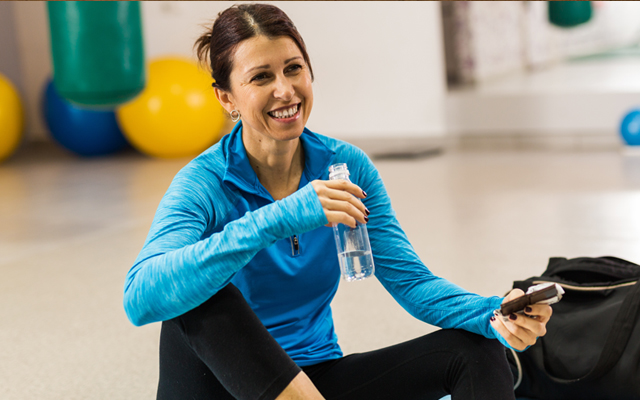Are You at Risk for Osteoporosis?

Osteoporosis is a disease that weakens bones to the point where they break easily—most often, bones in the hip, backbone (spine), and wrist. It’s called a “silent disease” because you may not notice any changes until a bone breaks. All the while, though, your bones had been losing strength for many years.
Bone is living tissue. To keep bones strong, your body breaks down old bone and replaces it with new bone tissue. Sometime around age 30, bone mass stops increasing, and the goal for bone health is to keep as much bone as possible for as long as you can. As people enter their 40s and 50s, more bone may be broken down than is replaced.
Although osteoporosis can strike at any age, it is most common among older people, especially older women. Caucasian and Asian women have a greater risk of osteoporosis. Other women at increased risk include those who:
- Have a family history of broken bones or osteoporosis
- Have broken a bone after age 50
- Had surgery to remove their ovaries before their periods stopped
- Had early menopause
- Had a diet low in calcium and/or vitamin D throughout their lives
- Had extended bed rest or were physically inactive
- Smoke
- Drink alcohol excessively
- Take certain medications, including medicines for arthritis and asthma and some cancer drugs
- Have a small body frame
The U.S. Preventive Service Task Force recommends that women aged 65 and older be screened (tested) for osteoporosis with a bone density test. If you are under 65 and may be at increased risk for an osteoporosis-related fracture, ask your doctor if you should be screened earlier.
5 ways to help prevent osteoporosis
These tips can help you protect your bones at any age.
- Get enough calcium and vitamin D.
Calcium is found in dairy products such as milk, cheese, and yogurt as well as in seafood, leafy greens, tofu, and food fortified with calcium. Vitamin D is necessary for the body to absorb calcium from food. One of the best sources of calcium and vitamin D is milk fortified with vitamin D. Other sources include eggs, liver, butter, and some kinds of fish. - Eat lots of fruits and vegetables.
You can get important vitamins and minerals from eating a variety of vegetables and fruits. In addition to leafy greens, try tomatoes, sweet potatoes, bananas, peppers, oranges, strawberries, and pineapple. - Exercise regularly.
You can help keep your bones strong with weight-bearing exercise, such as weight training, walking, hiking, jogging, climbing stairs, tennis, and dancing. - Avoid smoking and limit your alcohol use.
Both smoking and drinking alcohol can affect how calcium is absorbed in the body, and they can also cause other issues that affect bone health. - Talk to your doctor.
Ask your doctor about your risk for osteoporosis and steps you can take to prevent it.
Find out more about osteoporosis
National Institutes of Health Osteoporosis and Related Bone Diseases National Resource Center
1-800-624-2663 (toll-free)
1-202-466-4315 (TTY)
NIHBoneInfo@mail.nih.gov
www.bones.nih.gov
National Institute of Arthritis and Musculoskeletal and Skin Diseases
1-877-226-4267 (toll-free)
1-301-565-2966 (TTY)
niamsinfo@mail.nih.gov
www.niams.nih.gov
National Osteoporosis Foundation
1-800-231-4222 (toll-free)
info@nof.org
www.nof.org
You should consult a physician in all matters relating to your health, and particularly in respect to any symptoms that may require diagnosis or medical attention. Any action on your part in response to the information provided here is at your discretion. BCBSRI does not recommend or endorse specific tests, procedures, advice, or other information provided in this newsletter.